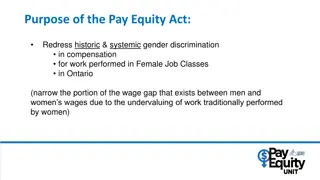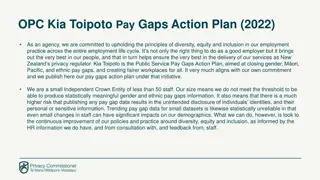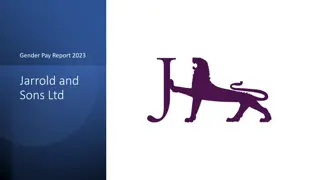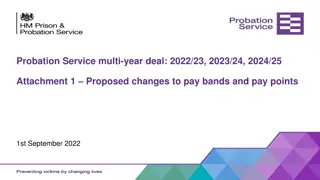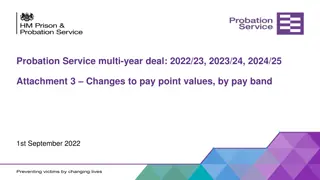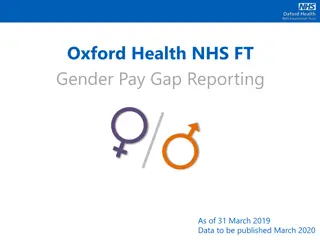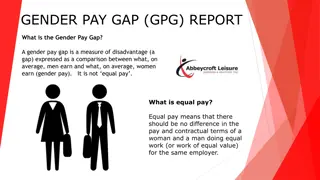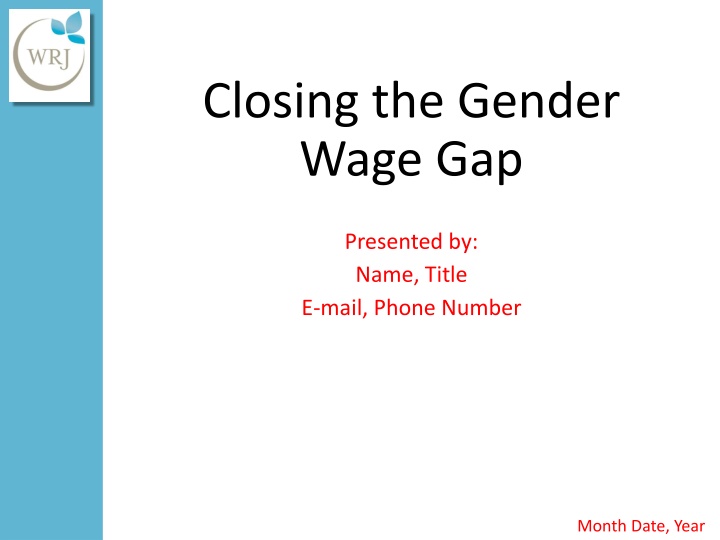
Addressing the Gender Wage Gap: Legislation and Strategies
Explore the persistent gender wage gap issue in the US and Canada, along with existing legislation such as the Equal Pay Act and Canadian Human Rights Act. Learn how organizations can ensure pay equity and combat discrimination based on gender. Discover the impact of gender-based wage discrimination and the importance of closing the gap for a fair and equal society.
Download Presentation

Please find below an Image/Link to download the presentation.
The content on the website is provided AS IS for your information and personal use only. It may not be sold, licensed, or shared on other websites without obtaining consent from the author. If you encounter any issues during the download, it is possible that the publisher has removed the file from their server.
You are allowed to download the files provided on this website for personal or commercial use, subject to the condition that they are used lawfully. All files are the property of their respective owners.
The content on the website is provided AS IS for your information and personal use only. It may not be sold, licensed, or shared on other websites without obtaining consent from the author.
E N D
Presentation Transcript
Closing the Gender Wage Gap Presented by: Name, Title E-mail, Phone Number Month Date, Year
The Wage Gap In the United States, women on average earn 78 cents for every dollar their male counterparts make Women of color face an even greater disparity African American women: 64 cents per white male dollar Latina women: 54 cents per white male dollar In Canada, women on average earn 81 percent of what their male counterparts make
Pay Equity: A Jewish Issue You shall not defraud your fellow Israelite. You shall not commit robbery. The wages of a laborer shall not remain with you until morning. (Leviticus 19:13) And God created humans in God s own image, in the image of God, God created them; male and female, God created them (Genesis 1:27). We are all created b tzelem Elohim, in the image of God, and we should all be treated equally
Existing Legislation: U.S. 1963: Congress passes the Equal Pay Act, declaring that employers can no longer pay men and women different salaries for performing equal work At the time, women on average earned 59 cents on the dollar The wage gap has narrowed, but is nowhere near closed 2009: The Lilly Ledbetter Fair Pay Act ensures that individuals subjected to unlawful pay discrimination can assert their rights under the federal anti-discrimination laws Ledbetter v. Goodyear Tire & Rubber Co. (2007): Ledbetter could not sue because it had been more than 180 days since her first discriminatory paycheck But she did not learn she was being paid less until several years of work With this law, each discriminatory paycheck resets the 180- day limit to file a claim
Existing Legislation: U.S. April 8, 2014 (Equal Pay Day): President Obama took two executive actions to fight gender-based wage discrimination for federal contractors, covering about 1 in 5 workers in the U.S. Executive order: bans retaliation for disclosure of compensation information for all federal contractors Presidential memorandum: calls on the Department of Labor to require federal contractors to submit compensation data by sex and race In the States: Some states have no laws (Mississippi, Alabama), and others have strong protections against unequal pay (New York, West Virginia)
Existing Legislation: Canada Canadian Human Rights Act: men and women within the same organization must paid equally for substantively equal work Equal Wages Guidelines: identifies four factors to evaluate the value of work effort, responsibility, skill, and working conditions and elaborates on additional assessment criteria Canada Labour Code: gives Labour Program inspectors authority to look into an organization s records to collect data relevant to pay equity and launch a subsequent investigation Provinces have commissions or initiatives dedicated to pay equity
Legislative Update: U.S. Paycheck Fairness Act (S. 862/H.R. 1619) Close loopholes in the Equal Pay Act Bar retaliation against workers who discuss their wages Provide the same protections against sex-based pay discrimination that exist for discrimination on the basis of race or national origin April 9, 2014: The Senate filibustered the Paycheck Fairness Act, 53-44 September 10, 2014: 73 Senators from both parties voted to advance the Paycheck Fairness Act September 15, 2015: The Senate follows with a 52- 40 vote not to advance the bill any further Procedural maneuver?
Legislative Update: Canada Pay Equity Task Force Recommendations Act (C-389) Requires the government to implement recommendations from a May 2004 report, which have not been addressed Create a new pay equity commission, a tribunal for hearings, and a pay equity adjudication system Strengthen advocacy services Ensure a deeper commitment to research In the provinces: five of ten have pay equity laws Manitoba, New Brunswick, Nova Scotia, Prince Edward Island and Quebec. The laws are slightly different and apply to different people
Contact Us www.WRJ.org info@wrj.org 866-WRJ-5924




